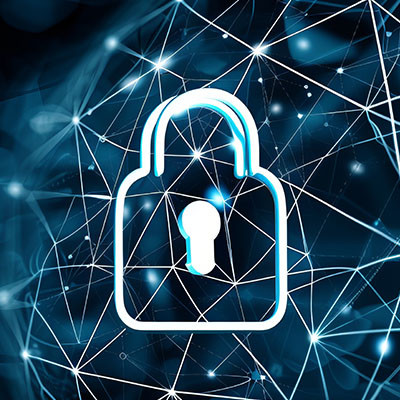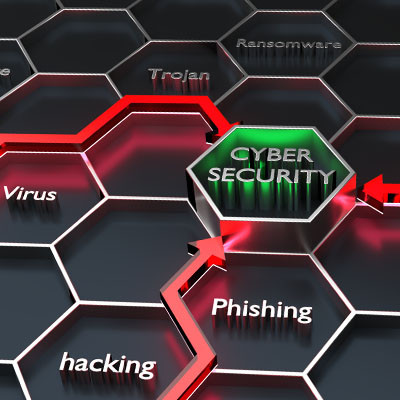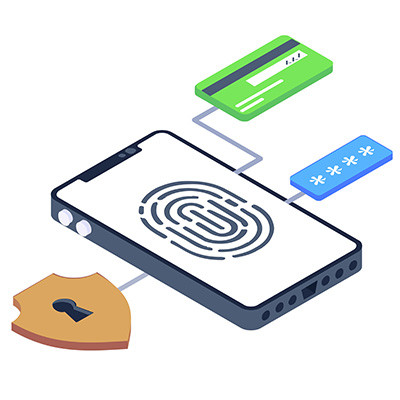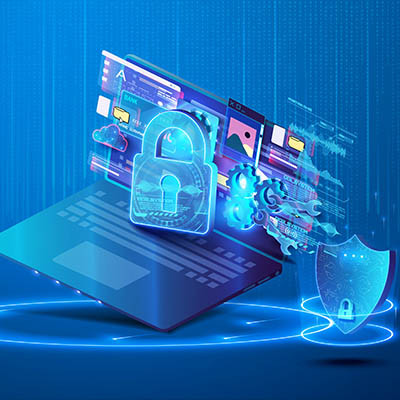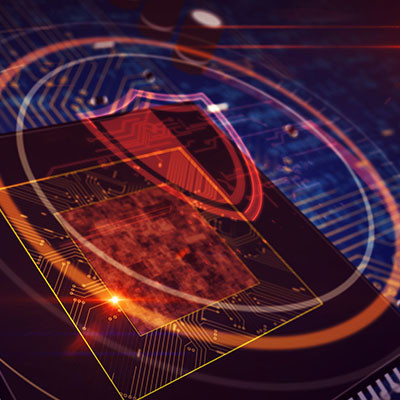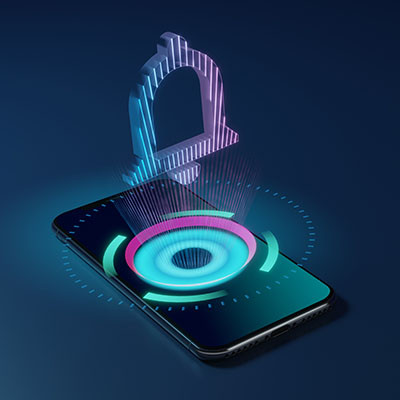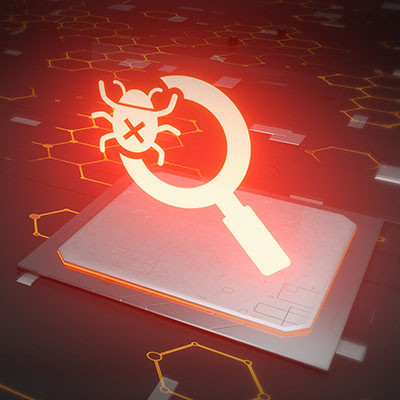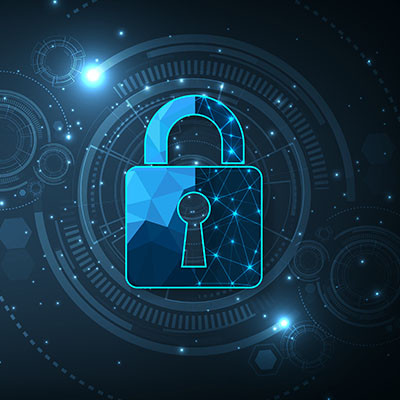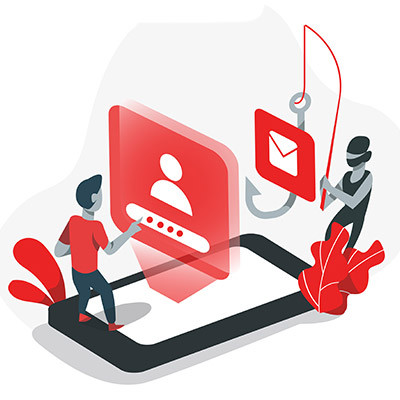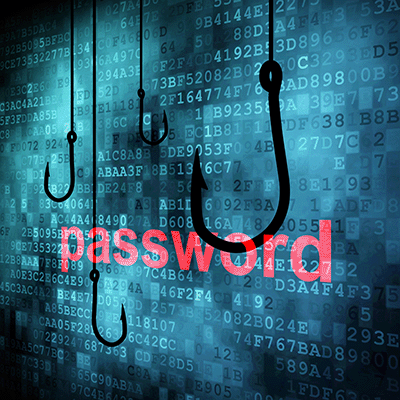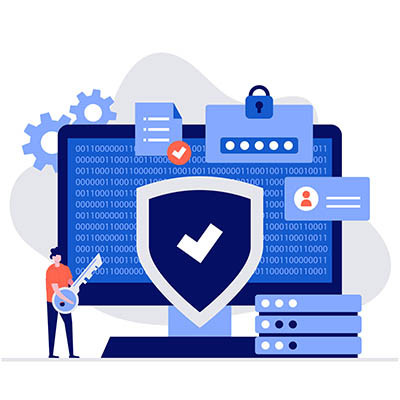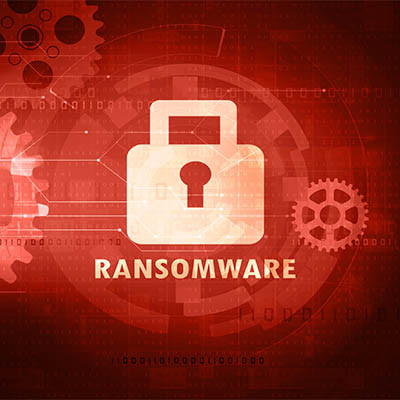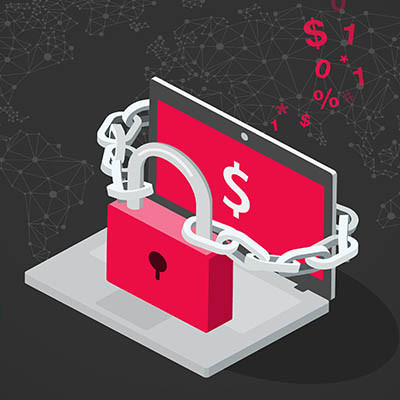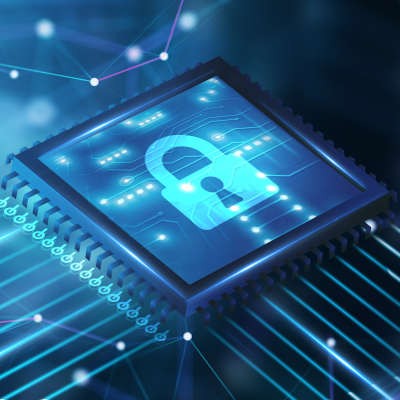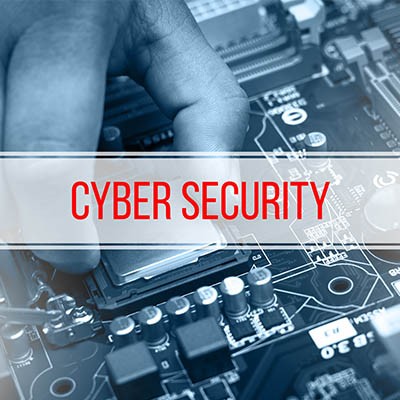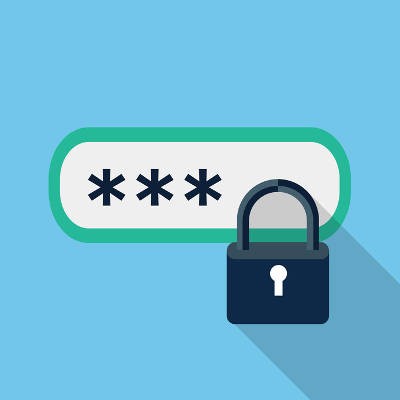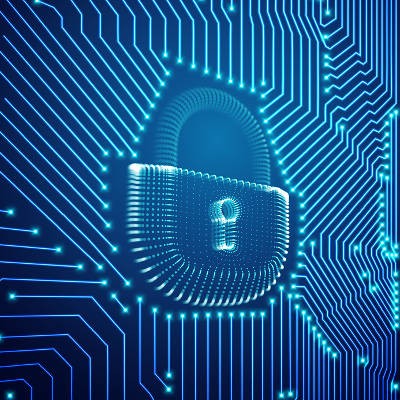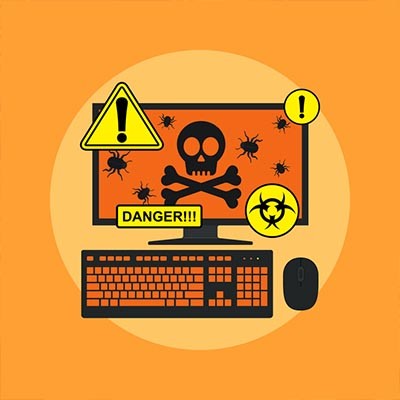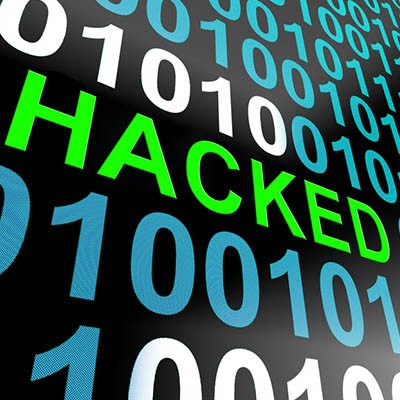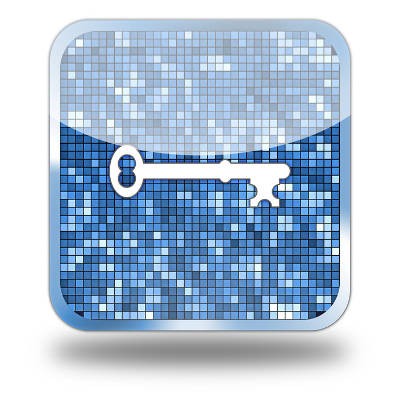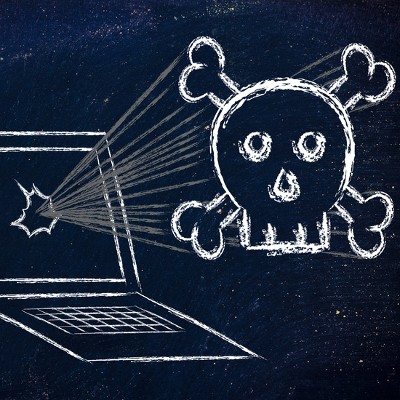Organizational cybersecurity is more important than ever, with an increasing number of threats requiring constant vigilance. To stay ahead of these dangers, cybersecurity experts and network administrators are continuously developing new solutions. This month, we’ll highlight three key innovations that are helping businesses navigate the evolving cybersecurity landscape.
k_Street Consulting, LLC Blog
Firewalls are a mainstay of network security. At its core, the firewall acts as a barrier between a trusted internal network and untrusted external networks, such as the Internet. Its primary function is to monitor and control incoming and outgoing network traffic based on predetermined security rules. Think of the firewall as a gatekeeper scrutinizing every packet of data that attempts to pass through. Let’s take a look at the different types of firewalls and some of their key functions.
One of the best things about the move towards streaming in media is that since people love watching real-life stories, studios have committed to creating documentary content that provides interesting perspectives. Many people don’t have a comprehensive understanding of technology, especially as it relates to real-world situations, so dramatized documentaries can be a good source of information. Today, we’re going to go through three riveting technology documentaries that are available on streaming services.
Nowadays, it is crucial that you make security a top priority. With the right approach, it not only saves you massive headaches, but also a considerable amount of capital—particularly if you leverage the appropriate solutions for SMBs. As a managed service provider, we can ensure that you implement the appropriate IT solutions to maximize the return on your security investment.
Network security is complicated, and as such, you need to have considerable knowledge of it to ensure that your business is as secure as possible against the plethora of threats out there. Thankfully, you don’t have to do it alone. We want to give you some insight into the dos and don’ts of network security.
Email is complex, despite all appearances. It’s easy to overlook its complexities when you log into your account and it just works. However, you’ll need to ensure that your email is managed properly, as well as secured with protective measures for the underlying technology. Let’s go over some of the more effective methods you can use to keep your infrastructure secure from all types of threats, whether they are visible or hidden.
Does your business rely on the strength of its information systems? If so, you understand just how important cybersecurity is to the health of your organization. In a near-constant attempt to maintain organizational cybersecurity, many organizations have started changing the way that they approach data and network security, by moving their security efforts to the edge of their network. This is called edge security, and there are some very intriguing benefits.
Passwords, as annoying as they are sometimes, are the front line of defense to almost every account and profile your business depends on. That doesn’t stop security professionals from trying to develop better strategies to secure digital systems. Some of the biggest names in tech are searching for ways to forge ahead passwordless. Let’s take a look at one example that has drawn the attention of the tech community.
For quite a while it took an actual disaster to encourage business leaders to allocate any time and money to put towards cybersecurity. Many businesses still don’t, in fact. Those that have, while absolutely prudent in their use of resources to help ward off security problems, may forget that there are still things that need to be done aside from employee training to keep their security up. Let’s go through a few things that every organization should be doing to maintain the security of their information systems.
When dealing with business computing, there are many situations where threats could potentially ruin the good thing you’ve got going. Today, a lot of businesses are getting much more serious about their IT security with what is known as a “zero-trust policy”. What exactly is a zero-trust policy? This month we will explain it.
When it comes to your network and its security, you cannot give all of your users access to all of your assets. It’s just not a good practice, and doing so can potentially put your resources at risk. Let’s discuss how network segmentation can make a world of difference for the integrity of your network and the data found on it.
If Edgar Allan Poe worked in an office, here’s what one of his works would sound like:
True!—nervous—very, very dreadfully nervous I have been and am, but why will you say that I am mad? The office had sharpened my senses—not destroyed—not dulled them. Above all was my sense of hearing. I heard all things in heaven and on earth and many things in…the other place. So, how then am I mad, especially when I can so healthily and calmly tell you this story?
While we strongly recommend that you put the security safeguard known as multi-factor authentication in place wherever it is available, it is important that we acknowledge that cybercriminals are frustratingly inventive. So much so, in fact, that a new form of attack has been developed to take advantage of MFA, referred to as MFA fatigue.
Let me ask you a question… if you were a hacker, how quickly would you take advantage of newly disclosed bugs and other vulnerabilities? I’d bet it would be pretty quick, and industry experts agree. According to these experts, there’s less and less time for security professionals to react to vulnerabilities and zero-day threats… and it continues to shrink.
So, the question remains, how prepared is your business to respond when these kinds of vulnerabilities are taken advantage of?
Social engineering is a dangerous threat that could derail even the most prepared business. Even if you implement the best security solutions on the market, they mean nothing if a cybercriminal tricks you into acting impulsively. Let’s go over specific methods of social engineering that hackers might use to trick you.
Sometimes it can be easy to take cybersecurity for granted, especially when you consider that built-in security features are more powerful than they have ever been. Unfortunately, if you think that cybersecurity is something that ends with the built-in security of your desktops and laptops, then you’re in for a rude awakening.
Hacking attacks can be stressful to manage, but when you add in that they can strike when you least expect them to, it gets a lot worse. You’ll never know how you respond to such an event unless you simulate it and replicate it somehow. This is what the penetration test is used for; it provides your business with a way to prepare for cyberattacks.
Cybersecurity is not easy to manage, and even professionals have their work cut out for them against modern threats like ransomware and other high-profile security threats. Today, we want to educate you on some of the terminology used in cybersecurity, namely the relationship between a vulnerability and an exploit, as well as what you can do to keep the risks associated with both relatively low.
How many devices or points of access do you have for your business’ data infrastructure? Chances are it’s more than you think, at least at first glance. If you count up all the mobile devices, server units, workstations, laptops, and so on that have access to your network, you might suddenly realize how important it is to secure all of these endpoints, as any unsecured device could be a path forward for hackers.
If you aren’t making cybersecurity a priority for your business, then we urge you to review the following statistics to ensure that you understand the gravity of the consequences. Let’s take a look at some of the ways scammers and hackers are making their way around the carefully-laid defenses placed by businesses and how you can protect your own organization.
How often do you check social media only to find your news feed clogged with your friends and family sharing the results of quizzes like, “Which Star Wars character are you,” or “What’s your superhero name based on your birthday.” While these quizzes might seem harmless on the surface, they often hide a far more sinister agenda, one which uses the personally identifiable information provided to them for nefarious purposes.
During the first half of the Super Bowl last month, cryptocurrency exchange company Coinbase bought a minute of ad space to broadcast an ad that was just a QR code on the screen, meandering diagonally around the screen like the famous Windows screensaver. Millions of people took out their smartphones and scanned the code and now cybersecurity professionals are publicly decrying the tactic.
There are a lot of threats out on the Internet, and many of them have absolutely a slim chance to threaten your business. Unfortunately, there are plenty that can and it only takes one to set your business back. Many IT professionals currently working for enterprise businesses deal with threats day-in and day-out, so they are experienced and knowledgeable. Small business owners, who for all intents and purposes are the lead IT decision-makers, don’t always consider these risks; they just need to keep their business running effectively.
You see the headlines every single day while browsing the Internet: “So-and-So Suffers Massive Data Breach” or “Huge Data Breach Leaves Thousands of Credentials Exposed to Hackers.” Maybe you don’t see these specific headlines, but you get the idea; cybersecurity is a big deal these days, and you need to take it seriously before your business encounters problems that it cannot recover from.
You might wonder how it is possible that people can guess the passwords of others, but it turns out that it’s a bit easier than you might at first think. According to a new study, not only has a significant portion of the population tried to guess someone else’s password, but even more of them are successful in doing so. How can this be, and what can we learn from this trend?
Today’s cybersecurity landscape is dangerous, to say the least, prompting many organizations to adopt what is called a zero-trust policy for their security standards. Is a zero-trust policy the best solution for your company’s cybersecurity woes, and how effective is it toward preventing security issues? Let’s take a look.
Ransomware is bad stuff, and it’s only gotten worse with its recent resurgence that aligned with the COVID-19 pandemic. Phishing attacks and other means by which ransomware is commonly spread have used the current atmosphere as a springboard. This makes it even more critical that these kinds of behaviors and attempts can be spotted and stopped.
If anything has been made clear by recent strings of high-profile ransomware attacks, it is that businesses and organizations simply do not take security as seriously as they need to. We urge you to use this opportunity to reconsider your own levels of network security. Are you doing all that you can to keep your data and assets secure? There are countless threats out there, and they all must be addressed (or at least prepared for) in some way.
Imagine going to log into one of your devices only to find that it has been completely wiped of any files located on it. Furthermore, imagine trying to log into your online account to manage the settings of said device, only to find that the password you know is correct is being identified as incorrect. This is the experience that many users of Western Digital’s My Book NAS device are currently going through, and it’s suspected that it is all because of an unpatched vulnerability.
Cybersecurity is one aspect of running a business that absolutely cannot be underestimated in its importance. It doesn't matter if you’re a huge enterprise or a small business; if you don’t take cybersecurity seriously, there is a very real possibility that your organization could be threatened in the near future. The easiest way to ensure your business’ continuity is to develop an internal culture of cybersecurity, and it starts from the top-down with you, the boss.
We’re all familiar with the idea that pop culture has cultivated in our minds about computer hackers, but as it happens, this impression is just one of the many shapes that the modern hacker can take. This kind of closed-off view is dangerously shortsighted, so let’s take a few moments to dig into the kinds of hackers there are, in ascending order of the threat they pose to your business.
Your business’ network is so important that if something were to infiltrate it that doesn’t belong there, it could wreak havoc on your whole company. One way that businesses can get their cybersecurity to a reliable place is through what is called penetration testing. This month, we thought we would briefly describe what exactly penetration testing is and how it can help your business.
Ransomware is no laughing matter, especially in terms of the costs it can impose on its victims—this is, after all, what ransomware is famous for. However, some of these costs can be derived from unexpected expenses and exacerbate the already significant issues that ransomware poses. Let’s go over some of the costs that you should anticipate, should you be targeted by a successful ransomware attempt.
Some terms are thrown around like everyone knows what they are. This is especially the case with IT and technology solutions. Perhaps it’s a result of them being around for quite some time in professional environments, but it doesn’t help those who are unfamiliar with the technology. One term that we should all understand is “firewall,” as it’s omnipresent in the business sector, but it’s far from the only security solution you’ll need to guarantee safety.
Employee monitoring—the practice of keeping an eye on your employees and their computer activity during work hours—isn’t exactly a new practice. However, with remote work suddenly seeing a huge boost in popularity, many businesses have sought to confirm that their workers are spending their work time as productively as possible. If you do choose to go this route, however, it is important to be aware of the lines that you cannot cross.
With cyberthreats the way that they are, a lot of industry professionals go on and on about the importance of deploying technologies designed to reduce the potential threats that a business has to confront. This technology isn’t cheap and while they absolutely do help you protect your technology and data; today’s hackers know that. Unfortunately for small business owners, that shift has left your staff on the front lines of cybersecurity; a place they really shouldn’t be. Let’s discuss cybersecurity from an employer’s perspective.
When it comes to a business’ cybersecurity, there is no magic bullet to solve every problem. No miracle cure, no panacea, no Staples “that was easy” button. Instead, you need to deploy various means of protecting your operations. Let’s discuss how your business’ security needs to be shaped in three different environments: your physical infrastructure, your cybersecurity solutions, and your employees’ security habits.
As the workers that power many businesses are remaining at home, remote solutions have proven to be a significant tool in keeping productivity moving. However, with nobody going into the office, monitoring your IT environment is necessary to make sure that the infrastructure you depend on is still in the right conditions. For this week’s tip, we’ll discuss some best practices to help you do so.
When someone starts talking about social engineering, people often get confused. They think we’re talking about cloning. While having two of something you love may not be terrible, the social engineering we routinely cite is much, much worse. Social engineering is the act of using social interactions to get people to make cybersecurity mistakes. Today, we’ll take a look at social engineering and how it can have a negative effect on your business.
Cybersecurity needs to be one of any business’ primary considerations. More than it ever has been before, cybersecurity is one of the biggest day-to-day issues that a business needs to deal with; and, this need is only exacerbated by the shortage of cybersecurity talent and loyalty to outdated security strategies have put many businesses in an unenviable, and vulnerable, position.
The way a business handles network security is directly related to what problems will arise from their use of information systems. Cybersecurity has become a major part of all businesses, of all geographic locations, and all sizes. Because the better your cybersecurity is, the less problems your business will have to overcome, cybersecurity has grown into a multi-hundred-billion dollar a year industry. Cybersecurity hasn’t always been a concern for businesses. After all, the internet hasn’t been around for THAT long. However, the history of cybersecurity has a fascinating story behind it, and today we’d like to share it with you.
October is National Cybersecurity Awareness Month, and we thought we’d share some of our very best tips and tricks to help you and your business keep your data and network safe in the modern ever-changing threat landscape. Cyberattacks can happen anytime, so being aware is crucial. That’s why cybersecurity in the modern business starts with you. It is your job to keep information safe. Sure, you can improve the tools you use to keep your infrastructure free from threats, but ultimately, to protect this data, you will need to stay vigilant.
We’ve all caught the obvious spam email, like the message that is clearly bogus, or the offer that is definitely too good to be true.
We’re going to confidently assume none of our readers are getting tricked by Nigerian Princes or getting roped into order virility drugs from an unsolicited email. The real threat comes from the more clever phishing attacks. Let’s take a look.
Cybercriminals have been altering and ramping up efforts to steal data for much of the past decade. Once thought to just be a nuisance, now it has become evident that the cost of doing business now includes comprehensive network security strategies, designed to keep threats from affecting your business’ ability to create revenue. Let’s take a look at a working cybersecurity strategy.
It’s one thing to implement password security for your business, but another entirely to convince your users that it’s for the best in regards to network security, rather than implementing it as an annoyance to them. Your organization should make using new passwords and best practices as easy as possible to expedite the security process.
Does your organization take network security as seriously as it should? It’s easy to forget with today’s advanced security offerings that the online realm is a dangerous place, but the truth of the matter is that you can’t risk your business’ security--not even for a moment. We’ll walk you through how your organization can minimize threats to security, as well as give you a primer regarding what’s at stake.
Cybersecurity is one of those hot-button issues that you should understand well enough to protect your business and yourself. Basically, as your organization holds more sensitive information, you’ll need to be more vigilant about how you approach cybersecurity. Today, we’ll take a look at the design and practices of organizational cybersecurity, and how you can work to bridge the gap between the solutions you can’t afford and the ones you already use.
Colleges and universities are part-time homes to more than 16 million people, and employ over 1.5 million more. Most of them utilize the networks set up by the college’s bevy of IT administrators. If you consider that most people have difficulty keeping viruses and other malware off of their personal computers, opening up networks that facilitate this kind of user demand can be tricky. Today, we ask: can a campus’ network every truly be secure?
You never know when your organization might fall prey to a disaster, whether it’s something natural that you can’t predict or a user error from even the most vigilant employee. We’ll walk you through what some of the most common office disasters are and how you can make sure your organization survives them with ease.
Bar none, cybersecurity has to be a major consideration for every business owner or manager in business today. The prevalence of people looking to rip your company off has never been higher; and that is the truth for nearly every company that uses the Internet for anything. Today, we take a look at some of the most serious cybersecurity threats that everyone should be cognizant of right now.
Security continues to be a major pain point for businesses of all shapes and sizes, and with the overwhelming volume of new and emerging threats hitting the scene on a daily basis, many professionals have turned to automated solutions based around artificial intelligence to fight back. While this presents a considerable benefit, it also creates other issues that need to be addressed if we want to take advantage of it in the years to come. Is there a way to use A.I. for network security without putting your business at risk?
At first glance, the Internet of Things is confusing, but now that we’ve been seeing “smart” devices hit the market for some time, there are understandably a few very serious issues that come with so many devices being able to be accessed from the Internet. The utilization of “smart” devices carries value. Here we have machines that do a lot of the heavy lifting for us in our lives, and with the ability to remotely control them, they only become that much more valuable.
Ah, the holidays; they are a time for good food and good cheer, but also tend to be a time of gift-giving of all kinds. You might have all kinds of new gadgets running around your office that aren’t being accounted for. Some of these devices might be a security issue for your business precisely because they aren’t normally meant to connect to the Internet. These Internet of Things devices just aren’t as secure as they should be, especially in a business environment.
Data breaches are common problems for businesses of all shapes and sizes. In fact, they often have huge repercussions that aren’t initially seen in the heat of the moment. How can you make sure that a data breach won’t negatively impact your business, even well after you’ve fixed the initial problem?
Today’s headlines are peppered with stories of major companies and institutions falling victim to a cyberattack. As a business owner, what’s your response to these gut-wrenching stories? If you write them off as fear mongering and believe that these attacks can never happen to your SMB, well, you’re wrong. They can and it’s up to you to prevent such a disaster.
As a small business, your assets are limited more than you’d like them to be. You have a budget that yearns for more flexibility, and there are only so many hours in the day to accomplish all of your goals. Thankfully, in an era that’s more connected than any that came before, modern technology provides solutions to businesses that need to get a little more value out of their budgets. One of these solutions is called remote monitoring and management.
You might be surprised to hear how the scope of the Internet of Things has increased over the past few years. These connected devices are all over the place. In order to ensure that your business isn’t affected in a negative way by these IoT devices, you’ll need to consider the many risks and how you will respond to them.
It only makes sense that you would want only the best security for your organization. It’s natural to want to eliminate risk entirely. However, this simply is not a realistic viewpoint to take where your security is concerned, and it can even contribute to greater security issues as a company holds out for the best solution.
Security is always changing due to the volatility of online threats and vulnerabilities. Things have changed so much over the past decade that solutions that worked back then are so outdated that they put your business at risk today. This brings into question what you should expect in the years to come. What are some of the threats that your business can expect to face in the future?
Network security is a crucial consideration for every contemporary business owner, as there are just too many threats that originate from an Internet connection to be overlooked. One only has to look at what businesses of all sizes have dealt with, even within this calendar year, to gain an appreciation for how crucial it is that every business owner consider their cybersecurity.
If there is any solution that is a constant across businesses, it would have to be the use of email. This also means that the risk of threats coming in through an email solution is also present in businesses of every shape and size. How is this shaping our approach to security now, and how will this shift in the future?
Disasters happen. This is a fact of life, and no amount of hoping can help your business dodge one. You might be able to predict weather anomalies that can cause damage to your organization, like a flood or a fire, but some of the most dangerous disasters out there are impossible to see coming--namely, threats to your organizational security, both internal and external.
2018 will see many changes to the way that businesses manage security, but unlike 2017, when many companies suffered from large high-profile data breaches, the trends aren’t as obvious as you might think. We’ll go over some of the potential trends we could see as a result of 2018’s security developments and why they matter to your business.
There are literally billions of sports fans in the world, and the popularity of these events brings in big money; and big money typically attracts hackers. Using all types of methods, there has been a history of hacking in almost every sport. Today, we take a look at some of the most famous hacks that have shaken up the sports world.
When your employees think about hackers and network security, do they picture some cloaked or hooded figure in a dark room typing away at a keyboard? Do they see a recluse living in their mother’s basement? Popular culture has given many users a false sense of reality regarding hacking attacks and the culture surrounding them, and it can come at the detriment of your business.
The Internet of Things is constantly changing and evolving, but this also means that it might be growing a bit too fast for its own good. So many devices these days have connectivity that it’s difficult to keep your business secure from them. We’ll discuss whether or not the Internet of Things is outpacing the efforts of security organizations and businesses, as well as what you can do to make sure that your business doesn’t fall victim to it.
Managed service is a relatively new concept, but that doesn’t mean that the industry hasn’t grown rapidly. You can now get a managed service contract for your household appliances and one for your automobile. The truth is that not having access to a large cache of capital needed to make proactive investment used to be the bane of the small business. The service model has changed that completely. It has certainly revolutionized the IT deployment and support models. In fact, from hardware support to cloud computing, there are service options for most IT products. This month, we will take a long look at the Managed Security Service Provider (MSSP), and the circumstances that need to happen to gain value from one.
The business world has been presented a lot of threats recently, and perhaps one of the most notable is ransomware. The reason it has become so notorious is because it’s incredibly difficult to remove from a system; and, the way that it spreads is constantly changing and adapting to further its influence. How can your business prepare against such a volatile threat? It all starts by remaining mindful of how ransomware spreads.
Let’s say that one of your employees downloads an attachment from an email claiming to be a receipt for an Amazon order or other online shopping outlet. The attachment then proceeds to infect their workstation with a virus or malware. This puts the integrity of your infrastructure at risk--all because of a simple mistake. Do you send the employee to cybersecurity training, or do you trust they will learn from the mistake and never repeat it?
Maintaining network security for a small business has been known to be a major challenge, but not for a lack of effort. Due to the unique budget restraints and workforce troubles that are associated with a smaller organization, security is known to suffer considerably for a number of reasons. On top of worrying about network security maintenance, you need to worry about the many threats that continue to evolve with each and every passing day. How will you keep your business assets secure in 2018?
More businesses than ever before have been falling victim to the various threats found on the Internet, which has provided a valuable opportunity to learn more about how to protect your business and ensure its survivability in the face of data breaches. However, even your employees are a valuable method of securing your business, especially if you take the time to explain to them the important role they play in security.
How confident are you that your employees act in the best interest of your company’s security with every decision they make? While it’s certainly the case that you, as the business owner, think along these lines, it’s also true that the average worker isn’t nearly as motivated about network security as you are. The challenge, then, for business owners is to get everyone in your organization on the same page when it comes to security best practices.
Businesses don’t typically pay enough attention to the possibility of a cyber attack--a scary thought if you’re unprepared. Instead of just hoping that hackers will overlook your company, you need to equip your network with enterprise-level security tools while taking proactive measures that keep threats out of your infrastructure.
Firewalls are one of those things that businesses need, but may not have. They are integral parts of network security for organizations of all shapes and sizes, as well as the average PC user. We’ll discuss what a firewall does for your organization, and why it’s important that you implement one as soon as possible.
When it comes to network security, we often see organizations having one of two approaches: 1) They make security a priority by implementing airtight solutions, or 2) They have no clue what network security means. Of course, if a company doesn’t have security put into place, employees might take matters into their own hands and implement unauthorized solutions. This is called shadow IT, and it has unfortunate results, even if the user has good intentions.
If you panic in the event of a hacking attack, imagine how the National Security Agency (NSA) feels knowing that some of its exploits are for sale on the black market. While there isn’t any proof that the NSA has been breached, there’s evidence to suspect that their exploits are available for purchase on the black market. This means that a willing hacker could get their hands on government-grade hacking tools--a dangerous concept.
With all of the major data breaches making the news these days, it’s not very surprising when you hear about a new one. However, what is surprising is just how much the average cost per breach has skyrocketed in recent years. The cost of data breaches is up 29 percent since 2013, which equates to roughly $4 million per data breach.
A vulnerability has been discovered that affects all versions of Microsoft’s Windows operating system, including the long-unsupported Windows XP, going all the way back to Windows 95. The vulnerability, called BadTunnel, allows attackers to directly bypass system defenses and initiate a man-in-the-middle attack. The vulnerability isn’t limited to just Windows, either; it also affects Internet Explorer, Edge, and other Microsoft software.
When it comes to cybersecurity, maintenance is key. Whether you choose human-based security or an automated security solution, running into shortcomings is still possible. Human security tends to rely on the word of experts, and anything that doesn’t fit into the guidelines is missed and may therefore get through and wreak havoc. Network security can be a touch overzealous, in a way “crying wolf,” with an excess of false positives that ultimately require human analysis, leading to human frustration.
Mobile devices have grown extraordinarily popular in the workplace. Organizations find them to be of considerable value for staying connected and getting work done while outside the office. This trend has presented a serious risk in the form of network and data security. How can businesses support mobile devices in the workplace, without compromising on the security of the device and the data it holds?
Hackers of all shapes and sizes use brute force attacks to gain access into accounts and infrastructures, but do you know how they work and what your business can do to protect against them? Failing to understand brute force attacks could put sensitive information in the crosshairs of hackers, and leave it vulnerable to ongoing attacks.
 You implement technology solutions to keep your network safe from hackers, but what would you do if your systems were bypassed and infiltrated? Every business owner needs to consider this scenario, because even the best of us can fall victim to hacking attacks when we least expect them. Approaching such an event in a reasonable way is your best chance of making it through in one piece.
You implement technology solutions to keep your network safe from hackers, but what would you do if your systems were bypassed and infiltrated? Every business owner needs to consider this scenario, because even the best of us can fall victim to hacking attacks when we least expect them. Approaching such an event in a reasonable way is your best chance of making it through in one piece.
 Hackers are notorious for exploiting technology for their benefit, but users often forget that mobile devices are exploited just as often as desktops and workstations; perhaps more so, due to their higher exposure to wireless networks that may not be secure. One of the greatest threats to mobile devices is the botnet, which is designed to enslave a device and have it turn on its owner (and the entire Internet).
Hackers are notorious for exploiting technology for their benefit, but users often forget that mobile devices are exploited just as often as desktops and workstations; perhaps more so, due to their higher exposure to wireless networks that may not be secure. One of the greatest threats to mobile devices is the botnet, which is designed to enslave a device and have it turn on its owner (and the entire Internet).






